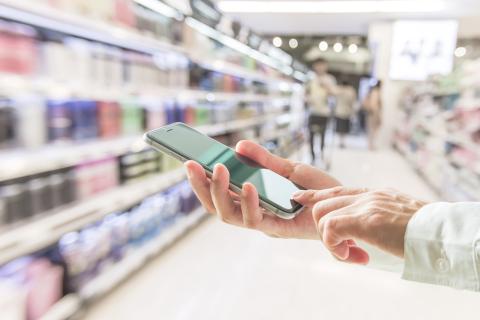Navigating E-Commerce in the New Year

With the recession and inflation weighing heavily on grocers and consumers alike, there are a few things that grocers need to focus on to make the most of the coming year.
Own Your E-Comm
There is a growing recognition among grocers of the need to own their e-commerce presence. Outsourcing to the large marketplaces made good sense when online was new and small. Now, however, grocers increasingly want to declare independence from those expensive middlemen.
Grocers that have nurtured loyal customer relationships, which often go back decades, rightly don’t want to cede the increasingly important digital portion of those relationships to third parties. Also, taking control of digital unlocks a universe of new profit-creating opportunities. Grocers want to advertise to customers, effectively cost-free, through email and SMS (short message service). They want direct, real-time access to online purchase data so that future offers can be personalized for greater conversion rates.
Thanks to readily available digital tools and technology like Shopify, grocers don’t need an online intermediary, and can stand up and do digital themselves more easily than ever before.
Nurture the Omnichannel Shopper
The concept of the omnichannel shopper – one who buys both in-store and online – is relatively new to grocery. A September 2022 study estimates that 60% of online grocery buyers made their first online order within the past two years.
Having now tried online, however, shoppers intend to continue using it. Fifteen percent of U.S. households now make an online grocery order every week, according to PYMNTS. Most grocery purchases will still be made offline at the store, but customers now expect to be able to buy however they like, whether in person or online.
That’s good news for grocers. Omnichannel customers reward merchants who deliver a multichannel experience. When in-store grocery shoppers become omnichannel shoppers, their overall spend increases by 16%, from both bigger basket sizes and more frequent orders. Customers that order online for pickup in store often grab a few additional items at pickup. A midafternoon email offering a discount on prepared foods captures customer spend that may have gone to a restaurant. The data is unequivocal: Multichannel engagement works.
Historically, grocers wanting to embrace the omnichannel opportunity were hamstrung by the inability to process SNAP EBT transactions online. Thanks to USDA efforts, that’s changing quickly.
At first, mainly the giant grocers and marketplaces piloted and were approved to process SNAP transactions online. Almost all indies weren’t. An e-comm site that can’t accept SNAP excludes a big chunk of the consumer market – more than 40 million consumers deploy $100 billion-plus of SNAP spend annually. For most independents, taking e-comm in-house wasn’t viable without the ability to process SNAP payments online.
Now, however, independents can get approved for online SNAP. For instance, Grocerist and its partner Forage helped Gong’s Market become the first single-store grocer in California to be approved for online SNAP. Hundreds of additional independents are expected to get approved for the first time this coming year.
That change really matters. A Private Label Manufacturers Association study found that 25% of SNAP consumers buy groceries online. With easier access, adoption should grow. In 2023, more independent grocers will work with a technology partner to enable SNAP payments within their e-commerce sites, and they’ll win back revenue that may have been lost to national retailers that had the ability to accept SNAP online while the indies didn’t.
Omnichannel infrastructure also equips grocers to do good for their customers. Independent, community-focused grocers are setting up unique subsidy programs where consumers can use SNAP online to get even greater discounts, like the Double Up Food Bucks program. Having an e-commerce system in place helps properly track food items and discounts, whether it’s from a government subsidy, wholesaler or philanthropic organization, to make food more affordable. While it’s great to offer these programs, grocers need to have an e-commerce system that can properly filter customers and products with the right offer, or it limits the impact that those programs can have.
While government discounts and philanthropy programs are less difficult to administer at a point-of-sale level, integrating loyalty programs into these is more complex and requires a flexible omnichannel solution. With this type of system in place, grocers can also use marketing tools like email and social media to drive awareness of the programs.
Digital Tools Drive In-Store (and Online) Growth
In 2023, grocers will increasingly view online and in-store as two parts of a single integrated system.
Grocers have typically thought of digital marketing tools only within the context of driving online sales, but in-store customers have email accounts. They spend lots of time on social media. Online communication may be the grocer’s most powerful tool for driving in-store sales growth. This coming year, grocers that once thought of digital tools as a costly, inconvenient nice-to-have will come to see it as a mission-critical way to reach existing customers and build loyalty both online and in-store.
While 2023 looks to be a difficult year as the economy continues to shift, grocers can put the infrastructure in place so that they’re not left behind and don’t lose customers. Many grocers initially built an e-commerce presence because they felt they had to, not because they thought they could make money at it. Now that more than 20% of grocery spend is projected to be made online by 2026, up from around 11% today, grocers are recognizing that, at scale, in-house-run e-commerce can be a powerful driver of profit. The technology is now there so that grocers can make the choice to own the customer relationship, as they have done since the first day they opened in their communities.







